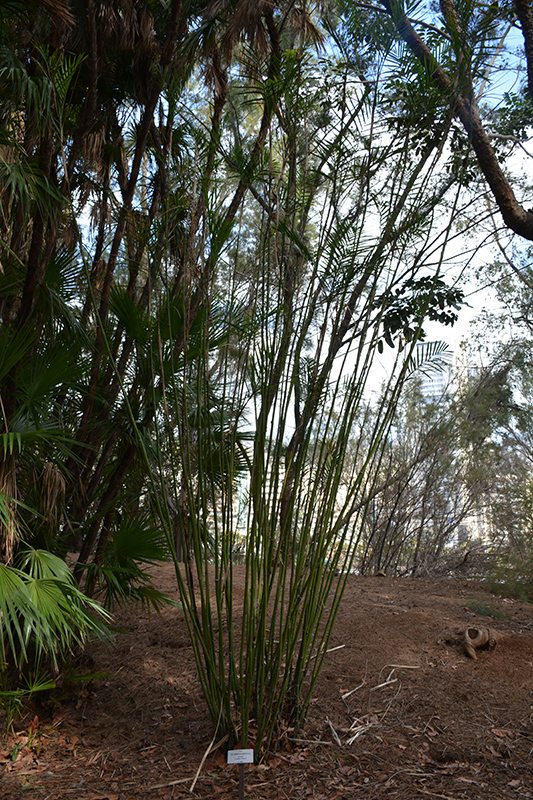>> Home
Height: 7 feet
Spread: 4 feet
Sunlight:
![]()
![]()
Hardiness Zone: 10a
Other Names: Cane Palm, Parlor Palm, Bamboo Palm
Description:
A very popular plant that is low maintenance; graceful fronds arch out from central stems, creating an elegant patio or garden setting; great for low light areas; do not overwater; protect from frost, move indoors to overwinter
Ornamental Features
Reed Palm features dainty clusters of yellow flowers along the branches in mid spring. It has green evergreen foliage. The narrow pinnately compound leaves remain green throughout the winter. The fruits are showy orange drupes which fade to red over time, which are displayed in mid summer.
Landscape Attributes
Reed Palm is an open multi-stemmed evergreen shrub with a shapely form and gracefully arching branches. Its relatively fine texture sets it apart from other landscape plants with less refined foliage.
This is a relatively low maintenance shrub, and should not require much pruning, except when necessary, such as to remove dieback. Gardeners should be aware of the following characteristic(s) that may warrant special consideration;
- Suckering
Reed Palm is recommended for the following landscape applications;
- Accent
- Mass Planting
- General Garden Use
- Container Planting
Planting & Growing
Reed Palm will grow to be about 7 feet tall at maturity, with a spread of 4 feet. It has a low canopy with a typical clearance of 1 foot from the ground, and is suitable for planting under power lines. It grows at a slow rate, and under ideal conditions can be expected to live for approximately 10 years. This is a dioecious species, meaning that individual plants are either male or female. Only the females will produce fruit, and a male variety of the same species is required nearby as a pollinator.
This shrub does best in partial shade to shade. It does best in average to evenly moist conditions, but will not tolerate standing water. It is not particular as to soil type or pH. It is quite intolerant of urban pollution, therefore inner city or urban streetside plantings are best avoided. This species is not originally from North America. It can be propagated by cuttings.
Reed Palm makes a fine choice for the outdoor landscape, but it is also well-suited for use in outdoor pots and containers. Because of its height, it is often used as a 'thriller' in the 'spiller-thriller-filler' container combination; plant it near the center of the pot, surrounded by smaller plants and those that spill over the edges. It is even sizeable enough that it can be grown alone in a suitable container. Note that when grown in a container, it may not perform exactly as indicated on the tag - this is to be expected. Also note that when growing plants in outdoor containers and baskets, they may require more frequent waterings than they would in the yard or garden.
